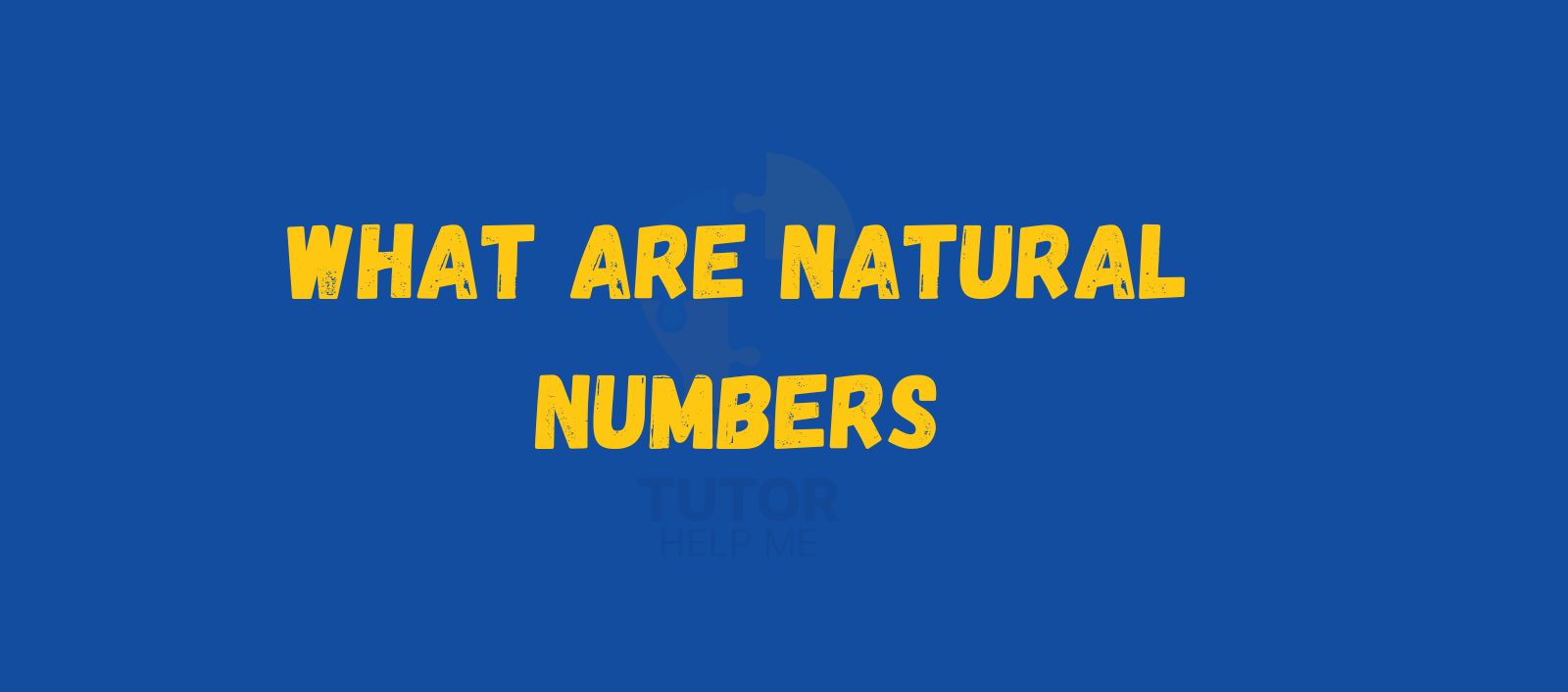Natural numbers are the basic numbers we use for counting things around us. They start from 1 and continue endlessly. Whether you’re counting books, apples, or steps, you’re using natural numbers.
These numbers form the foundation of arithmetic and play a vital role in daily life and learning mathematics. Understanding natural numbers and their properties helps students solve problems faster and more accurately.
This blog will explain what are natural numbers, explore their key properties—such as closure, associative, commutative, and distributive—and provide clear examples to make learning easy and effective.
What are Natural Numbers?
Natural numbers are the counting numbers we use in everyday life. They begin from 1 and go on forever:
1, 2, 3, 4, 5, …
They do not include 0, decimals, or negative numbers. Natural numbers are used to count things like people, objects, and steps.
“Learn Numbers with our 1-On-1 Maths Tutors.”

Key Properties of Natural Numbers
Natural numbers follow certain mathematical rules called properties. These help us understand how numbers behave in addition and multiplication.
1. Closure Property
The closure property says that when you add or multiply two natural numbers, the result is always a natural number.
Examples:
- 4 + 5 = 9 (Natural number)
- 6 × 3 = 18 (Natural number)
But subtraction or division doesn’t always give a natural number.
2. Associative Property
This property says the grouping of numbers doesn’t change the result in addition or multiplication.
Addition:
- (2 + 3) + 4 = 2 + (3 + 4) = 9
Multiplication:
- (2 × 3) × 4 = 2 × (3 × 4) = 24
3. Commutative Property
This property says you can swap the order of two natural numbers when adding or multiplying, and the result stays the same.
Addition:
- 3 + 7 = 7 + 3 = 10
Multiplication:
- 5 × 2 = 2 × 5 = 10
4. Distributive Property
The distributive property links multiplication and addition/subtraction together.
Example:
- 3 × (4 + 5) = (3 × 4) + (3 × 5)
- 3 × 9 = 12 + 15 = 27
Why choose Tutorhelpme Maths Tutors
Expert Maths Tutors: Qualified and experienced professionals.
1-on-1 Support: Focused attention for better understanding.
Flexible Learning: Sessions that fit your schedule.
Custom Plans: Lessons tailored to student needs.
Interactive Tools: Engaging online learning experience.
Affordable Prices: High-quality tutoring at fair rates.
Exam Preparation: Help with GCSE, A-levels, and more.
Progress Tracking: See clear improvements weekly.
Trusted by Parents: Positive reviews and proven success.
Best Tutors in the UK: Reliable, skilled, and student-friendly.
Conclusion
Natural numbers are the building blocks of all other number systems. They help us count, measure, and perform simple to complex calculations. From understanding how numbers add or multiply to learning how different rules apply, the properties of natural numbers give us important insights into mathematics.
Knowing these rules makes solving maths problems easier and more logical. Whether you’re a student or someone refreshing your basics, mastering natural numbers is a great first step. Keep practicing with examples to build strong maths skills. At TutorHelpMe, we simplify learning with expert help and the best tutors in the UK by your side.
Read more Exclamatory Sentence | Definition, Examples & Uses
FAQs
Is 0 a natural number?
No, natural numbers start from 1, not 0.
Are natural numbers infinite?
Yes, they go on forever with no end.
Are fractions natural numbers?
No, natural numbers do not include fractions or decimals.
Can natural numbers be negative?
No, natural numbers are always positive.
What is the smallest natural number?
1 is the smallest natural number.

